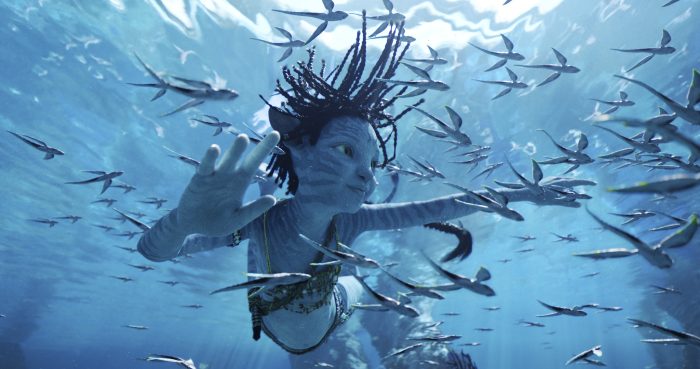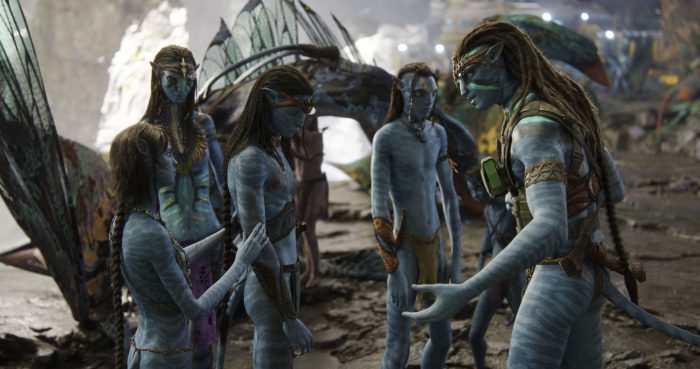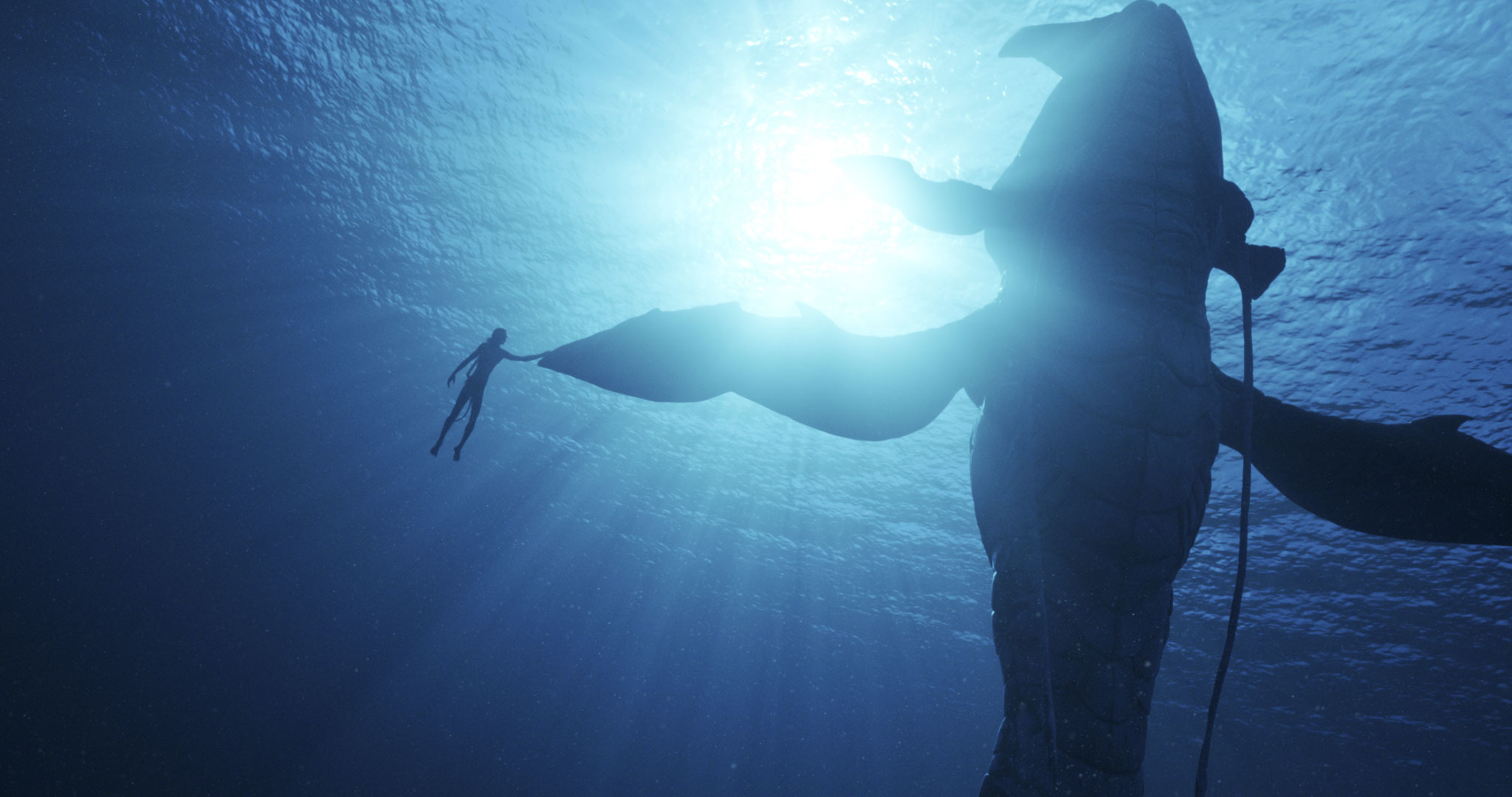After 13 years, 2.92 billion dollars and a decade as the highest grossing film of all time; this week Avatar finally returns.
Stepping back into Pandora for the first time since its record breaking debut, James Cameron reimagines the ongoing lives of Jake Sully and Neytiri, a decade after they combined human tech and Na’vi knowledge to battle the sky people and save Pandora’s green spaces.
Having built a family on the peaceful moon after the militaristic sky people’s retreat; the inevitable return of ships forces the Sullys to make hard choices in order to protect their people.
Finding sanctuary amongst the Metkayina, the Na’vi water clan, The Sully family must learn to adapt their forest skills to the ocean way of life.
A movie nestled deep within the whirling waves of Pandora, the technological achievements of movie-making once again take centre stage as the film submerges itself headfirst in the intricate ways of the water.

The sequel succeeds in every way expected, continuing the epic world building and phenomenal visuals that cemented its predecessor in film history, but rehashing the old mistakes of the first’s less than inspired plot.
Utilising the evolved 2022 technology to its greatest calibre, the visual atmosphere is endlessly immersive; elevated by a high frame rate and 3D focus to suck viewers headfirst into the ocean world. While 3D may not pack the surprise punch that it once did, this film certainly deserves Cameron’s encouraged format, with the scenery purpose built to pop right out of the screen.
These visuals are only enhanced by the atmospheric world building that continues long into the sequel. Submerged alongside the Sully family as they learn to live amongst the Metkayina, audiences too learn to swim, breathe and ride the water that gives this clan life. You’ll certainly be pining for a dip in those gorgeous waters as you return to the crisp winter air.
Pandora’s seas build off the design of its forests with great care, incorporating elements of our world with unique twists to make the landscape feel both familiar and excitingly foreign in every scene. The construction is so meticulous that the film often glances into nature documentary territory – exploring an atmospheric score, glistening oceans and exciting new species in what feels reminiscent of David Attenborough’s Blue Planet.
Furthering this relatability is the fantastic characterisation of the family, particularly the newly formed children who orient the film. The Sully children are a delight to watch, with Jamie Flatters, Britain Dalton, Trinity Jo-Li Bliss, and a surprisingly effective Sigourney Weaver all creating nuanced young characters behind the mocap suits. The newly formed Metkayina clan, led by Kate Winslet, Cliff Curtis and Bailey Bass, are also intriguing to watch, with their unique quirks and ocean ways providing refreshing new experiences on the planet. Jack Champion’s human youth Spider is also an excellent addition, bringing a blend of cultures that Jake Sully once inspired.

In fact, of the whole delightfully energetic cast it’s often Sam Worthington’s Jake and Zoe Saldana’s Nytiri that feel most poorly formed, often falling narrowly into two dimensional parent roles without much thought for their fascinating past.
Following on from a film which despite receiving highest grossing box office success, seems to lack cultural impact and a memorable plot, the sequel once again falters a little at its narrative.
Suffering from overworked sequel tropes – including a rehashed villain, the next generation, and repeated plot ideals – the film doesn’t necessarily ever justify its long run time or even its existence. Building off what, for many years, was an self-contained narrative, the film struggles to find an antagonistic purpose, although the villian it suggests is intriguing, if under-utilised.
Elements that made the first so awe-inspiring are missing, including the link and titular Avatar, and the Na’vi language (which disappears as a copout to simplify our watching experience). Most of the more exciting concepts of the plot, such as Weaver’s Kytiri, appear to be laying tracks for the sequels already being pursued – a bold and optimistic move to be sure.
For a franchise trying to imbue a message about indigenous culture and colonisation, it does seem that a more nuanced understanding should have developed since 2009. While elements of Pacific Islander culture briefly pop up throughout the Metkayina, there remains a question: is James Cameron still the right person to be telling these stories?
And does this sequel do enough to garner the reception needed to fuel his anticipated cinematic universe on Pandora?
A rehashing of old ideas (particularly a sinking boat set piece), and old mistakes seems to be the core pitfall of what could have been the film of the year, as Cameron attempts to revive his once in a lifetime technological achievement for the franchise world.
However, a fun array of new characters and unique world building do salvage the sequel-esk plot, as do the technological advancements of the impressive visuals.
Somehow a film which shouldn’t work past its monetary success finds a new reason for living, as the visual atmosphere immerses, amazes and delights in every moment, proving once again Cameron’s ability to construct an extraordinary experience that transcends the story and the screen.
That is what made the first Avatar such a box office legend… and those dazzling visuals are what may squeeze the sequel into cinematic hearts once again.
